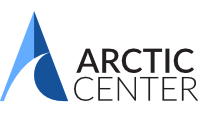TROMSØ
WHERE YOUR ARCTIC ADVENTURE BEGINS
The city of Tromsø is located north of the Arctic Circle at 69 ˚N, as far north as the northernmost points of Alaska and Russia. However, the Gulf Stream’s journey along the Norwegian coast creates a climate that is more favourable than areas at similar latitudes.
Tromsø, or Romsa in Sami, was founded on the basis of a history of hunting and trapping that created value as far back as the 18th century. Following its founding in 1794, Tromsø’s growth continued based on fishing, sealing and trading. The standard of living increased to such a level that the city was often referred to as the Paris of the North. Tromsø later became famous for many expeditions that set sail from here, and the town was put on the world map when Nobile and Amundsen left on their expeditions in 1926 and 1928. Amundsen’s attempt to rescue Nobile put Tromsø in the international limelight.
During World War II, Tromsø suffered moderate damage from the German warfare, which resulted in low priority during the subsequent reconstruction. Important infrastructure was built in the 1960s, contributing to further positive development. The airport opened, downtown Tromsø was connected to the mainland by a bridge, the famous Arctic Cathedral was built and the Cable Car opened.
The airport opened, downtown Tromsø was connected to the mainland by a bridge, the famous Arctic Cathedral was built and the Cable Car opened.
The event that really sped up the development of the city occurred in 1972, with the inauguration of the University of Tromsø. It is now called UIT – The Arctic University of Norway. This was followed by the regional hospital, which is now known as the University Hospital of Northern Norway. The Norwegian Polar Institute was relocated to Tromsø in 1998 and is now part of the Fram Centre. Hålogaland Theatre is an important cultural institution.
The population has doubled in the space of the more than 50 years that Tromsø has had the status of a university city. Today, around 77,000 people live in the Tromsø municipality, which makes it the country’s ninth largest in terms of area. More than 120 different nationalities are represented in Tromsø, and the city now accounts for 15 per cent of the population of Northern Norway.
Public sector: Almost half the jobs in Tromsø are within the public sector. The university employs almost 2,000 people and the regional hospital employs around 5,700. The Municipality of Tromsø employs around 6,900 people (4,200 full-time equivalents), while around 2,000 work for the Troms County Council. Moreover, there are a number of government departments, including the Norwegian Polar Institute, Hålogaland Lagmannsrett (Court of Appeal) and the tax authority Skatt Nord.
Research: A natural ripple effect of the university’s education of academics is the significant research community in Tromsø. Consequently, industries based on applied research constitute a significant proportion of the city’s value creation. Marine biotechnology, research related to the production of food from the sea and land and satellite-based Earth observation are among the key professions. The Fram Centre, Tromsø, Science Park, Nofima, the Marine Research Institute, the Centre for Remote Technology and the Norwegian Centre for E-health Research are among the leading research environments in Tromsø.
Trade & industry: Tromsø has a modest share of traditional industries, but trade and service is widespread. The two largest companies in Tromsø are Sparebanken Nord-Norge and the Norwegian Fishermen’s Sales Organisation. Much of the cash flow from fisheries throughout the region is concentrated in Tromsø, where all the major banks are represented. Other major companies are related to power generation, building and construction, transport, groceries, aquaculture, maritime services, trade in capital, media and other trading activities. The city’s best known brands include the brewery Macks Ølbryggeri, shipping company Hurtigruten and football club Tromsø IL.
The tourism industry in the Tromsø region: The Northern Lights: Tourism in Tromsø has long traditions since the city is a regional transport hub, including transport links with Svalbard, the rest of Norway and the world. In recent years Tromsø has attracted massive attention as a destination for Northern Lights tourists. This influx increased after the BBC screened Joanna Lumley in the Land of the Northern Lights in 2009. The programme proved to be an advertisement of inestimable value for the entire Tromsø region, and it put the city on the world map as the capital of the Northern Lights.
Following this programme, Northern Lights tourism to Tromsø has more than tripled in value. An analysis by the Norwegian Hospitality Association (NHO Reiseliv) estimates the turnover from the Northern Lights traffic was more than NOK 1.000 million in 2022. This target group generates a turnover in excess of NOK 2,400 per day, half of which goes to the purchase of activities. Around 25% of these tourists come from the United Kingdom, while Asia and Germany are also significant markets.
Hotels: There are more than 20 hotels in Tromsø, offering a total of 2,500 rooms / 5.000 beds. The number of hotel beds in Tromsø has increased almost 100 per cent over the in the past years. The occupancy rate has traditionally been very high compared to the national average, and is close to 70 per cent. Number of restaurants in Tromsø: approx. 40.
Air traffic: Tromsø Airport, which is located just 3 km from downtown Tromsø, is an international airport. The largest aircraft landing here have a capacity of 260 passengers. The airport has expanded the recenst years, including better facilities for international traffic. This is crucial for the further development of the tourism industry in Tromsø.
SAS and Norwegian have a combined total of 15 daily departures to Oslo on weekdays. Norwegian flies twice a week to London and once a week to Alicante, while SAS has three flights per week direct to Stockholm Arlanda. There are also charter flights linked to Hurtigruten, cruise traffic and package holidays. The charter traffic to Tromsø Airport may be described as limited compared to the potential. Air traffic has experience steady growth over the past decade. A total of more than 2.2 million passengers travel through Tromsø Airport anually.
Cruise traffic: The Port of Tromsø receives daily calls by the Hurtigruten, which brings more than 40,000 guests to Tromsø annually. Many of these guests arrive on charter flights from the United Kingdom and board in Tromsø. There is also considerable cruise traffic to the city. Around 200 cruise ships called at Tromsø in 2023, bringing more than 200.000 passengers to the city. The cruise industry is pushing for increased tourism during the winter.
Tourist attractions: Tromsø has a number of major tourist attractions, which are often marketed under the slogans such as “Where Your Arctic Adventure Begins” or “Urban Wilderness”. The Tromsø Cable Car and the Arctic experience centre Polaria both attract all together nearly 400.000 visitors annually, while the Arctic Cathedral is visited by around 100,000 tourists.
There are several providers of Northern Lights experiences in the destination company’s portfolio, in addition to a huge number of companies that offer winter activities other than Northern Lights chases.



